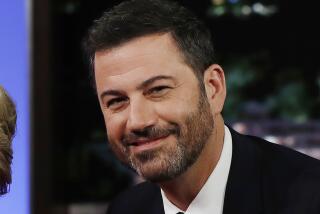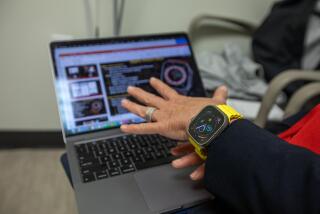Heart doesn’t miss a beat
- Share via
“ER”
NBC, Thursday, March 26, 10 p.m.;
Episode: “I Feel Good”
The premise
At a winter reunion of a summer camp for children who’ve had open heart surgery, camp veteran Vera befriends a first-time camper, Emily, whose parents prefer that she avoid exertion in the wake of several surgeries and finally a heart transplant for an underdeveloped heart.
In contrast, Vera is very active at the camp. She was born with the congenital heart problem known as tetralogy of Fallot -- defined by a hole in the heart, a thickened pulmonic valve, a thick right ventricle and an abnormal, or overriding, aorta. She reports having had a “Blalock-Taussig shunt” (a procedure used to shunt arterial blood to the lungs in babies who are born not breathing). Amid a high-speed game of ball, Vera collapses and her implanted defibrillator fires six times, causing her to jerk several times and black out.
At County General Hospital, doctors determine that her defibrillator fired simply because of the higher heart rate associated with exercise. The camp supervisor, known as Big Kahuna, is also chief of pediatric cardiology at County General. Although he wants to keep Vera in the hospital, she wants to return to camp. Kahuna agrees to reset the device’s range to allow heart rates up to 200 per minute before firing as long as Vera agrees not to overexert herself during the remainder of the camp.
The medical questions
Can children participate in vigorous exercise after open-heart surgery? Are tetralogy of Fallot and its repair and subsequent course described accurately? Does a defibrillator fire because of a rapid heart rate (sinus tachycardia), and can this be adjusted? Can someone else be shocked by touching a person when their defibrillator is firing? Is a hypoplastic (underdeveloped) heart treated with temporary procedures, followed by heart transplant? What is the prognosis for children who’ve had transplants?
The reality
In this episode, reality and unreality combine rather effectively. The children’s program -- Camp del Corazon -- actually exists, as do similar camps around the country. This one was founded in 1995 by pediatric cardiology nurse Lisa Knight and Dr. Kevin Shannon (the real-life Big Kahuna), director of pediatric electrophysiology at UCLA.
Now a nonprofit organization, the camp offers a summer camp on Catalina Island for children ages 7 to 17 with heart disease. “Most children who have had open-heart surgery are leading normal lives without restriction,” Shannon says. That’s not to say problems can’t occur. The real camp is prepared for evacuation with boats and a helicopter service on standby, Knight says.
Tetralogy of Fallot and hypoplastic (underdeveloped) heart are described accurately, and campers who have overcome such problems can do well at these camps, even exercising vigorously. Hypoplastic heart can be successfully treated with the temporary procedures that the show describes, followed by heart transplant. But the Blalock-Taussig shunt mentioned on the show would have been mostly obsolete since before Vera was born. It’s been replaced by a repair of the hole in the heart (ventricular septal defect) and opening of the outflow tract -- the main path from the right side of the heart to the lungs, says Dr. Ann Dubin, director of the pediatric arrhythmia service at the Lucile Packard Children’s Hospital of Stanford University.
As for the defibrillator, many people wrongly fear they can be shocked by someone else’s device. But the low-energy shock is delivered directly to the heart and isn’t transmitted all the way to the skin, points out Joe Sachs, an emergency room physician and executive producer of the show.
The episode also correctly portrays the fact that a defibrillator -- which allows for a specific range of heart beats per minute -- may be set with a high end that’s too low, and thus be triggered by exercise. The ideal trigger setting for a child is 200 to 230 beats per minute, Dubin says, “but the child could generally return right to camp and would not need to remain in the hospital.”
Shannon says most children who get heart transplants often will live for more than 10 years before requiring second hearts. They can exercise vigorously as long as they are properly supervised.
“ER,” devoting one of its final episodes to this real-world camp and using 60 actual campers as extras in the show, is ending its 15-year run in the right spirit.
--
Siegel is an associate professor of medicine at New York University’s School of Medicine. [email protected]






